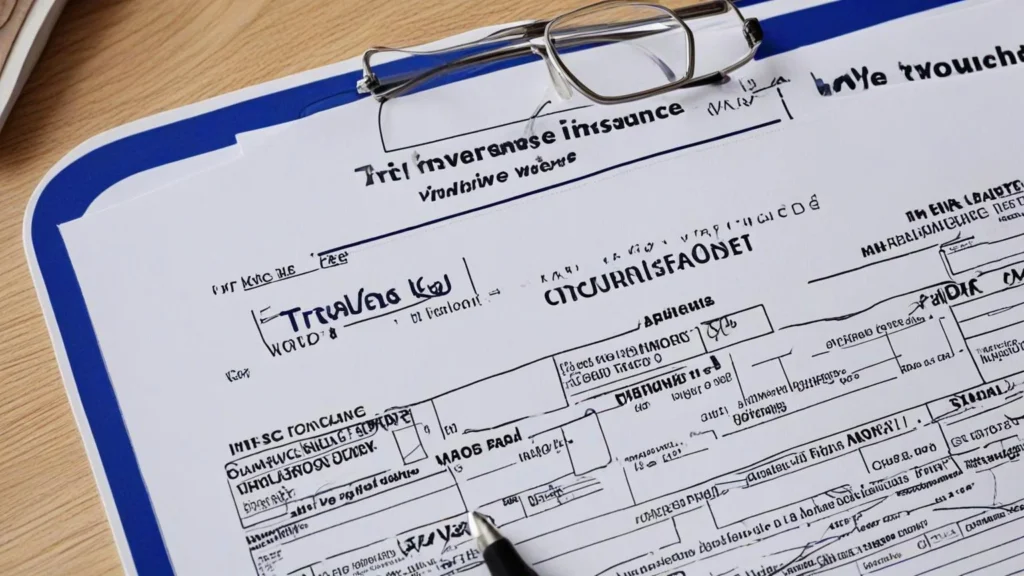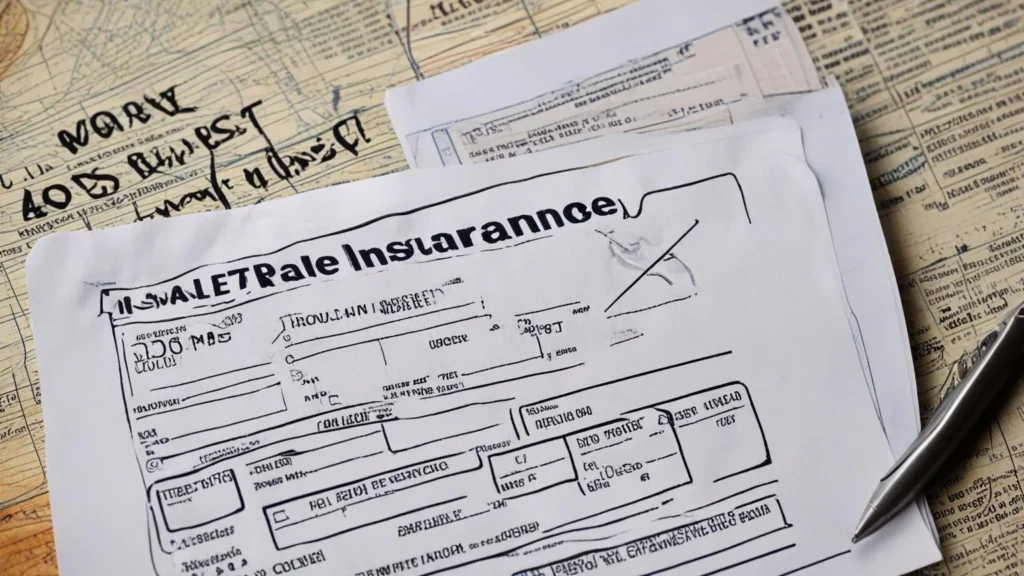Travel insurance is an essential tool for anyone planning a trip, offering protection and peace of mind against a range of unforeseen events. Whether you’re heading on a vacation, business trip, or an international adventure, understanding how travel insurance works can help you make the best decisions for your coverage needs. This comprehensive guide will explain what travel insurance covers, how it works, and provide detailed answers to common questions about travel insurance policies.
What Does Comprehensive Travel Insurance Cover?
Comprehensive travel insurance is a broad type of travel insurance that covers a wide range of potential issues you might face during your trip. Here’s an in-depth look at what comprehensive travel insurance typically includes:
Trip Cancellation and Interruption
- Coverage: If you need to cancel or cut short your trip due to unforeseen events like illness, a family emergency, or other covered reasons, this coverage reimburses you for non-refundable trip expenses.
- Example: If you have to cancel your flight and hotel reservations because of a sudden illness, trip cancellation coverage will reimburse you for these expenses.
Medical Emergencies
- Coverage: This covers medical expenses for injuries or illnesses that occur while you’re traveling. It may also include emergency evacuation if you need to be transported to a medical facility.
- Example: If you break your leg while hiking on vacation, your medical emergency coverage will help pay for the hospital bills and any necessary evacuation.
Emergency Medical Evacuation
- Coverage: This provides coverage for the costs of evacuating you to the nearest suitable medical facility or back home if needed.
- Example: If you get seriously ill or injured in a remote area and need to be flown to a major city for treatment, this coverage will cover the evacuation costs.
Baggage Loss or Delay
- Coverage: This reimburses you for lost, stolen, or delayed baggage and personal belongings.
- Example: If your luggage is lost by the airline, or delayed, comprehensive coverage can compensate you for the cost of replacing essential items.
Travel Delay
- Coverage: This covers additional expenses incurred due to travel delays, such as extra accommodation or meal costs.
- Example: If your flight is delayed for several hours and you need to stay in a hotel overnight, this coverage will help pay for the extra costs.
Personal Liability
- Coverage: This covers legal expenses if you are found liable for injury to another person or damage to their property.
- Example: If you accidentally cause a fire in your hotel room that damages other guests’ property, this coverage helps cover the legal and repair costs.
Accidental Death and Dismemberment
- Coverage: This provides financial compensation in the event of accidental death or severe injury resulting in dismemberment.
- Example: If a serious accident results in the loss of a limb, this coverage provides a lump sum payment to you or your beneficiaries.
24/7 Assistance Services
- Coverage: Access to a 24/7 helpline for emergency assistance, such as finding medical care or legal help.
- Example: If you lose your passport or need emergency legal assistance, you can call the assistance service for help.
What is Comprehensive Trip Insurance?

Comprehensive trip insurance is a type of travel insurance that offers extensive coverage for various potential travel issues. It is designed to cover a broad range of risks associated with travel, providing protection from the start to the end of your trip.
Key Features of Comprehensive Trip Insurance
- Broad Coverage: It includes multiple types of coverage, such as trip cancellation, medical emergencies, baggage loss, and more.
- All-Inclusive Protection: Offers extensive protection against a wide array of potential travel problems, making it a one-stop solution for most travel insurance needs.
- Flexible Options: Can be customized with additional riders or options based on your specific travel plans and risks.
Example of Comprehensive Trip Insurance
Imagine you’re going on a two-week trip to Europe. With comprehensive trip insurance, you’ll be covered if you need to cancel your trip due to illness, if you experience a medical emergency abroad, if your luggage is lost, or if you face legal issues. This type of insurance provides peace of mind knowing that you are protected from numerous risks.
How Does Traveler’s Insurance Work?
Traveler’s insurance works by providing financial protection and assistance services for various issues you may encounter during your trip. Here’s a step-by-step breakdown of how travel insurance works:
Purchase a Policy
- Choose Coverage: Select a travel insurance policy based on your travel needs, including the types of coverage you require.
- Payment: Pay the premium for the policy, which can vary depending on factors like the length of your trip, your destination, and the coverage amount.
Review Your Policy
- Read Terms: Carefully review the policy’s terms and conditions to understand what is covered and any exclusions or limitations.
- Understand Claims Process: Familiarize yourself with how to file a claim and what documentation you may need.
Use the Insurance During Your Trip
- Emergency Situations: If an issue arises (like a medical emergency or trip delay), contact your insurance provider using the 24/7 helpline.
- Document Incidents: Keep all relevant receipts, records, and reports related to the incident, as you will need these for filing a claim.
File a Claim
- Submit Documentation: Provide necessary documentation, such as medical reports, receipts, or police reports, to your insurance provider.
- Claims Review: The insurance company will review your claim and determine the amount of reimbursement or assistance you are eligible for.
Receive Benefits
- Claim Approval: If your claim is approved, you will receive reimbursement for covered expenses or access to the services specified in your policy.
- Resolve Issues: Work with your insurance provider to ensure all aspects of your claim are handled.
Example of Traveler’s Insurance in Action
If your flight is canceled, you can use your travel insurance to cover the costs of additional accommodation and meals. If you have a medical emergency, you will contact your insurance provider for assistance and file a claim for medical expenses.
How Does a Travel Insurance Policy Work?

A travel insurance policy works as a contract between you and the insurance company. Here’s a detailed look at how it functions:
Policy Purchase
- Selection: Choose a policy that meets your travel needs, covering aspects such as trip cancellation, medical emergencies, and more.
- Premium Payment: Pay the insurance premium, which is the cost of the policy.
Policy Coverage
- Coverage Details: The policy outlines what is covered, including the types of incidents and expenses that are eligible for reimbursement.
- Terms and Conditions: The policy includes terms, conditions, and exclusions that define the limits of coverage.
Filing a Claim
- Claim Process: If you experience a covered event, you need to file a claim by providing evidence and documentation to the insurance company.
- Claim Review: The insurance company reviews your claim to verify its validity and determines the reimbursement amount.
Receiving Benefits
- Reimbursement: If the claim is approved, you receive financial compensation for covered expenses.
- Service Access: You may also have access to various services like emergency assistance and travel support.
Example of How a Travel Insurance Policy Works
If your luggage is lost, you would contact your insurance company, submit a claim with proof of loss, and receive compensation for the lost items based on your policy terms.
Conclusion
Travel insurance is an essential tool for protecting yourself against various risks while traveling. Understanding what comprehensive travel insurance covers, the differences between comprehensive trip insurance and standard coverage, and the steps involved in purchasing and using travel insurance can help you make informed decisions and ensure a smooth travel experience.

